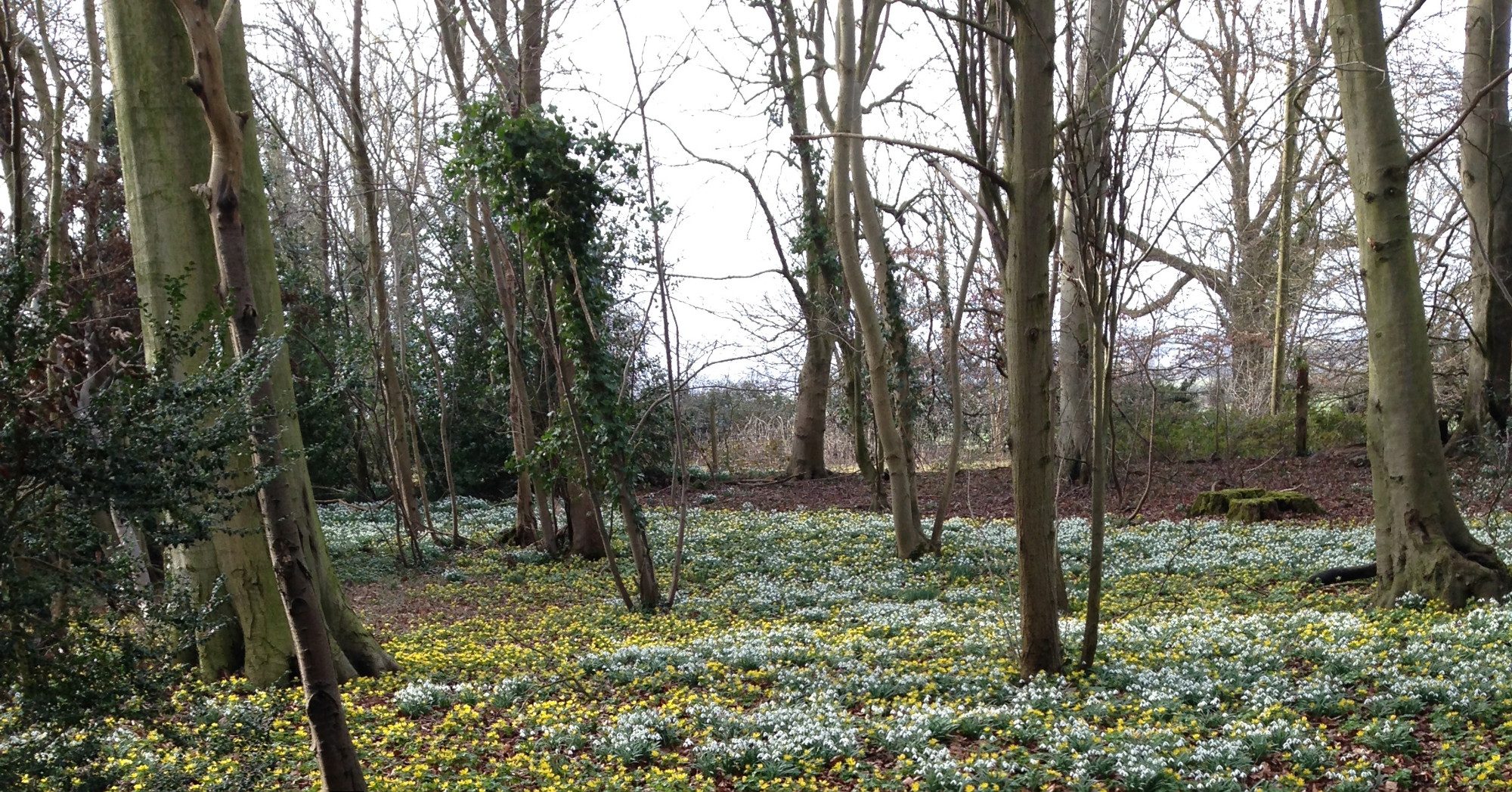Patricia Mirrlees had kindly invited us to her house ‘The Stone House’ on Mingle Lane. About 15 of us assembled at 6.30 pm and were invited first to explore the garden, and then to admire the views from the flat roof of this iconic building.
Afterwards Patricia served tea, coffee and soft drinks outside and we settled down to get to know each other and indulge in some ‘green’ conversation. The evening wasn’t exactly balmy, but still and not too cold – and later on a bat flew overhead!
Patricia is keen to promote biodiversity not only in her own garden but also in our local villages. This proved a stimulating topic! Councils’ mowing of road verges was discussed. In the spirit of Plantlife’s ‘No Mow May’ and other initiatives, it would be wonderful if councils could refrain from over-enthusiastic mowing, and perhaps leave certain areas for residents or eco-minded local groups to look after. For example, it was suggested that the triangles in front of the Johnson Hall and at the Gog Magog Way/Bar Lane junction in Stapleford would be suitable for wild flowers.
Hedgehogs were another area of interest, and the threat to them from increasing numbers of badgers – apparently Stapleford is no longer considered safe for hedgehogs for this reason. Muntjac deer are also on the increase.
The possibility of doing a biodiversity audit was raised.
We discussed two local wildlife sites – Stapleford Parish Pit, which is being looked after by a group of volunteers and seeing a gradual return of plant species, and the ‘pocket park’ established by Ciba-Geigy on Granhams Road, Great Shelford, which appears somewhat neglected at present.
However, there were also reality checks:
- Councils hire contractors to do their mowing. They generally use the cheapest. It’s unlikely that the workers, who are probably not local, can factor in different requirements for different areas.
- Parish councils may be sympathetic to demands for support for biodiversity, but they have little ready cash. For any given proposal or problem brought to their attention it is best also to suggest a solution, ideally one entailing little expenditure and little extra work for the councillors and clerk.
- Proposals to expand areas for wildlife are unlikely to be welcome to a majority of residents; certainly not before a great deal of education on the importance of nature.
- For the natural environment to flourish, it is not enough to leave things alone. We are not living in an ecologically-balanced, sustainable world full of natural predators and checks and balances. Wildlife has to be managed, or dominant/poorly predated species (ivy, rats, muntjac, pigeons) take over at the expense of ecological diversity. So, for example, road verges do have to be mown sometimes in the absence of animals grazing them (although it was suggested that it could soon be possible to use GPS to inform a verge management plan, rather as is currently the case with combine harvesting).
- A biodiversity audit, or wildlife survey, would be time-consuming – who would do it, when, where, and what would the results be used for?
So lots to mull over, and no doubt return to. Many thanks to Patricia for her hospitality, and to all who came and joined in the discussion.
Patricia is happy to have other visitors. You can contact her at pw229@cam.ac.uk.

